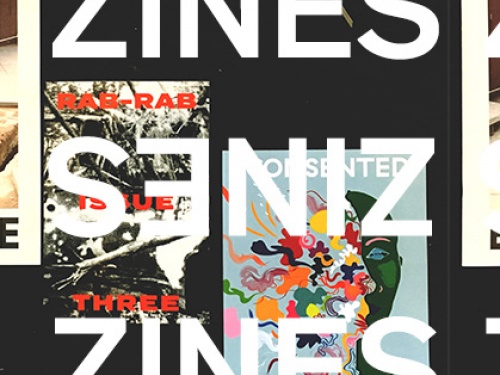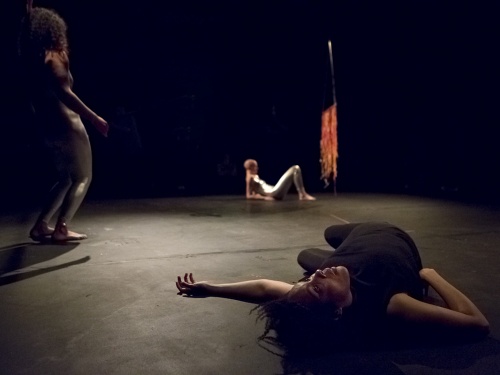From the Archive: Artists' Self-publishing and the ICA Bookshop
To mark the inaugural Artists’ Self-Publishers Fair this Saturday, the ICA Bookshop takes us through a sporadic history of artists' publishing at the ICA, as well as providing a gentle reminder that for the other 312 days of the year (we’re closed on Mondays), the ICA Bookshop serves as a repository for (almost) all things self-published.
Since its founding in 1947, the ICA has been a home for radical culture and a platform for emerging and experimental ideas to enter the wider discourse. Since its first exhibition in 1948 the ICA has published its own catalogues and contextual material related to all aspects of its programme, including various attempts at publishing its own magazine, most notably Living Arts which ran for three influential issues from 1962, and more recently Roland, which ran for nine issues between 2009 and 2011.
The most important letter in Institute of Contemporary Arts has always been that last ‘s’ - marking the ICA’s intention to represent all facets of artistic production, from visual art and moving image to sound and music, theatre and performance, design, literature and, of course, publishing. As a result, artists’ books and alternative forms of producing and distributing work have found a home with us from the ICA’s nomadic beginnings to its current Nash House residence.
In 1962 the ICA exhibited two book works by Austrian dadaist and editor of Der Dada, Raoul Hausmann, mere months before Hausmann would write to an impressionable George Maciunas recommending he call his new movement and publication Fluxus. This isn’t the only example of a timely archival exhibition pre-empting the next wave of radical publishing: a whole year and a half before Mark Perry published the first issue of his infamous Sniffin’ Glue, the zine that sparked a DIY publishing revolution, the ICA hosted the month-long exhibition Fanzines, a "display of both the esoteric and the serious in science fiction publishing", which ran as part of the ICASF 1975 programme.
A year later the ICA held an exhibition of Ed Ruscha’s prints and publications from 1962-1974, the period that took in his game-changing publications Twentysix Gasoline Stations, Various Small Fires and Every Building on the Sunset Strip. 1976 was really the year for artists' books at the ICA (so far), as August also saw the exhibition Artists’ Books, booklets, pamphlets, catalogues, periodicals, anthologies and magazines published since 1970, containing 609 items from the Arts Council's collection (though what these items were seems harder to discover - any ideas please do let us know!)
Fairs like ASP have also been a regular occurrence throughout the years in various guises, from the Art Ink book fair in 1983, the London Artist’s Book Fair, hosted at the ICA through the mid-to-late 2000s, Publish and be Damned, Comica Comiket, and our annual rare and artists’ book fair Room and Book. Since the ICA Bookshop was expanded from a magazine kiosk into a flourishing bookshop in 1977, it too has become a space for artists' publishing to call its own. Regulars of the bookshop should be familiar with the majority of titles on display at ASP, and maybe even the faces of a couple participants from behind the sales desk.
In more recent years the ICA has hosted In Numbers: Serial Publications by Artists Since 1955 which brought together works by Araki, Raymond Pettibon, Wallace Berman, Eleanor Antin, Terence Koh and General Idea, amongst others. AA Bronson has also been back with us this year to represent Printed Matter at Room & Book and discuss his Queer Zines touring exhibition and two-volume anthology. Even right now our ICA Fox Reading Room has an archival display of Bau magazine, the radical Austrian architecture magazine that ran throughout the 1960s and 1970s.
These publications still feel slightly out of place behind the perspex of vitrines or on display in an exhibition context however. The majority were designed to be distributed and read, with a low cover cost to allow wide circulation beyond the usual audiences. Some were specifically created to circumvent the very gallery and market context that has now appropriated them. Various architectural and curatorial interventions have been tested over the years to remedy this situation, yet these often merely result in the art object being exhibited outside of its original context in a newly limited fashion. This is the key to what makes fairs like ASP and bookshops like the ICA’s so important: their ability to present artists' publications and serial works as they’re intended to be consumed, purchased and indulged in. ■
Do you make a publication that doesn’t seem to fit in anywhere else? Maybe it’s just right for us - please get in touch.
ASP Fair is on 12 September, featuring over 50 UK and international independent artists self-publishers who will come together for a one-day fair.
This article is posted in: Articles, Blog, Events, Store
Tagged with: ICA Bookshop, Artists' Self-Publishing, ASP, ASP Fair, From the Archive, Peter Willis, Archive, History of the ICA










